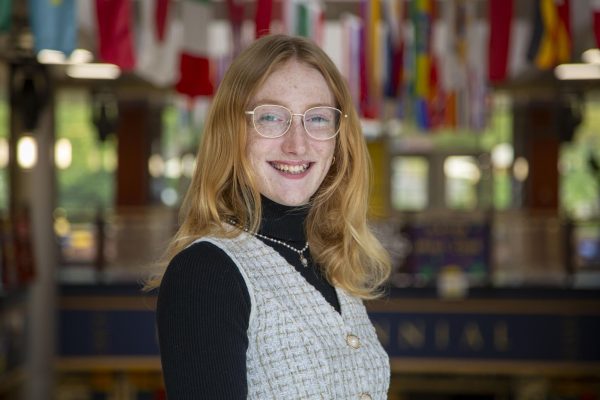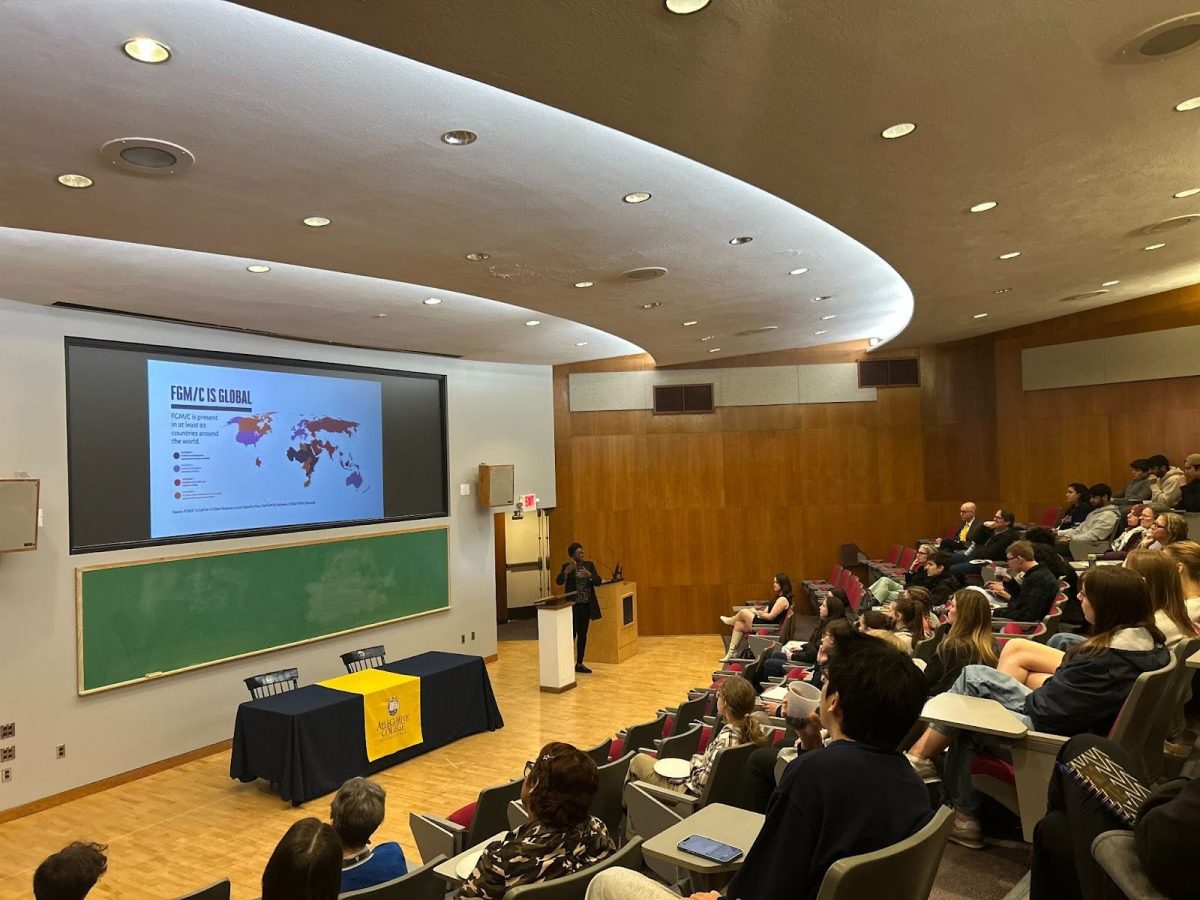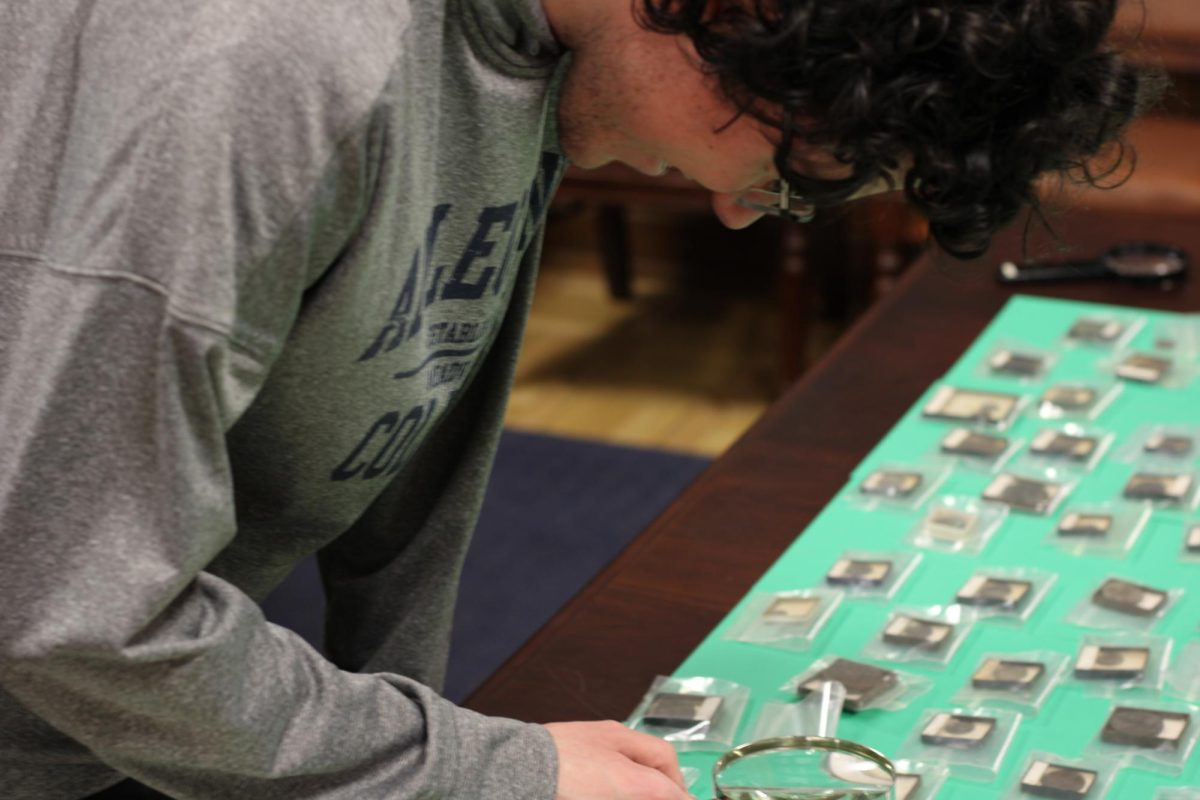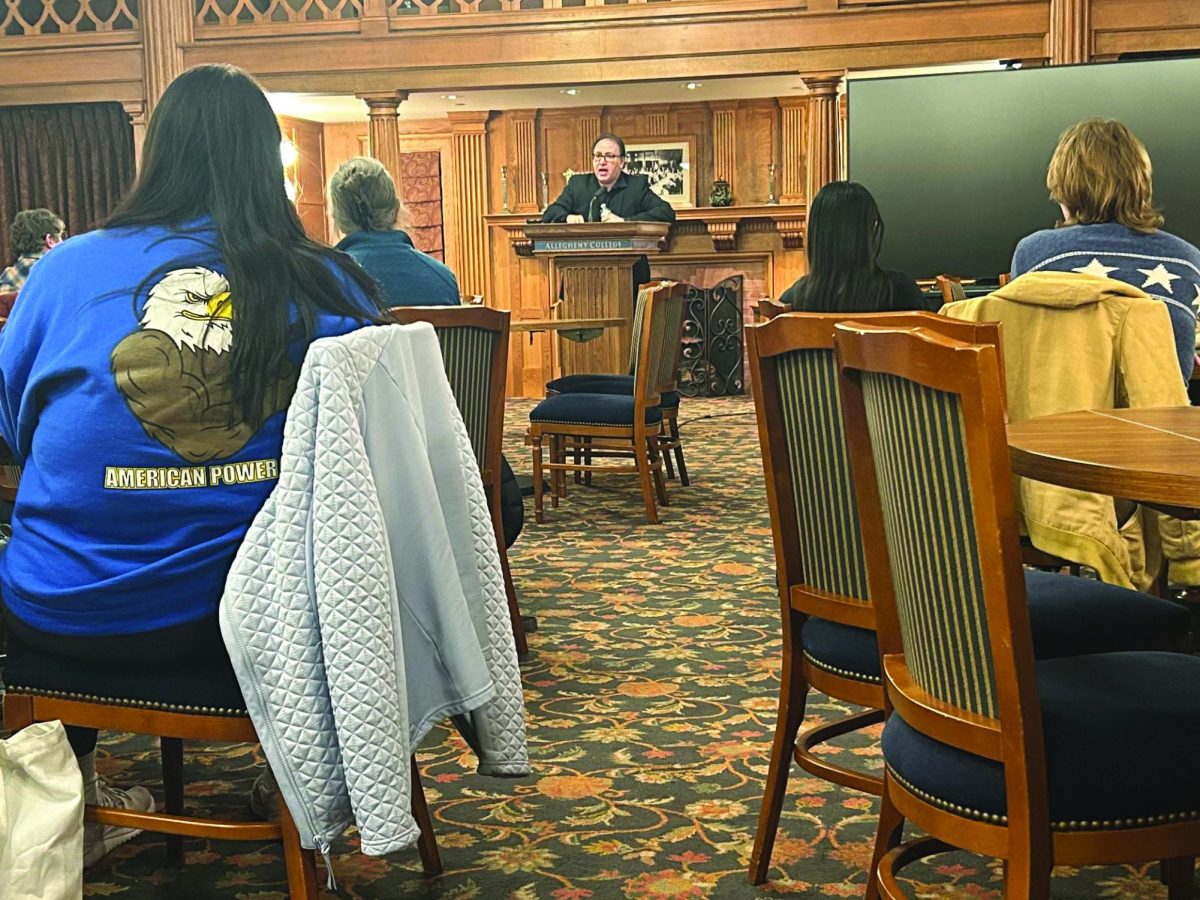Allegheny students, faculty, alumni and community members gathered on Sept. 26. from 5-7 p.m. for the opening of “OPEN SOUND CONTROL: Distance and Mediation,” an Allegheny Art Gallery show located in the Doane Hall of Art. The event was organized by Emily Graber, assistant professor of Computer and Information Science at Allegheny College, who is also a researcher and interdisciplinary musician.
Refreshments, fruit and snacks were provided at the opening, and it was a lively event with around 50 people. Many connections were made between faculty and students, as well as the featured artists: Graber, Julie Zhu from the University of Michigan and John Granzow from the University of Michigan. Grace Needleman from Northwestern University also had featured art, but was not in attendance.
“OPEN SOUND CONTROL is a diverse collection of interactive installations and visual representations that explore the complex relationship between sound and control,” read the event description at the front of the gallery. Through drawing, typing, crushing, waving, and breathing, the artists in this exhibit reexamine how sound can control and be controlled.”
Graber explained that there were multiple reasons that she decided to go with the theme of sound control specifically.
“This wasn’t stated in the actual description of the show,” Graber said. “But actually, OPEN SOUND CONTROL is the name of a network protocol that helps transfer information between computers usually that are [working with] sound.”
Graber has multiple pieces in the show including “Typewriter, 2024,” which is an interactive exhibit where the audience can type on an Olympia typewriter that then creates brush strokes digitally through Python code, which was written by Alish Chhetri, ‘25, and Jaclyn Pham, ‘25.
“I wanted to try something that was analog and digital, and I wanted to work with tactile touch,” Pham said.
Chhetri had a second piece he coded alongside Graber. The interactive exhibit featured a wooden version of a piano that is wired through a camera above it. When audience members wave their arms over the keys to create a shadow, the code responds with the tones of a piano, played above the exhibit on speakers.
“[This exhibit] is a lot of computer-vision stuff and a cool dynamic idea,” Chhetri said. “I cannot play piano, so I wanted to create something similar, including digital elements.”
Graber invited all three other artists to develop artwork for this exhibit after networking and creating connections in the small artist community. Zhu and Granzow both attended Stanford University, Graber’s alma mater, and Zhu then invited Needleman, whose work fit well with the theme.
While Graber enjoyed all of the artists’ pieces, one piece that stood out was “Ornithology, 2024,” an interactive nature piece from Zhu. A prompt tells audience members to, “Draw the imaginary bird outside your window,” on a large wooden board attached to the wall, and once an audience member’s pencil touches the board, it emits a bird chirp.
“It [“Ornithology, 2024”] was nice because anyone comes up to it and draws, and they get a little thrill from hearing stuff — hearing what they draw come to life,” Graber said.
The exhibits themselves took time to come together, though the bulk of the work happened a couple of days before the gallery opening. The installation period proved to be the hardest.
“One of the things hidden in art, and installation work especially, is that there is a lot of trial and error,” Graber said. “What emerges may look really simple and be relatively simple, but the process of getting there is not straightforward.”
Most of the work during the installation process involved tweaking the art to make sure everything was ready to go for opening night. The week before was extremely hectic getting everything in order and making sure that each interactive piece performed correctly, Graber said.
Graber said her personal favorite piece was “Shadow Piano, 2024” because of its simplicity and effectiveness.
“It’s fun to take these 88 piano keys and reorder them into a unique composition, and just kind of have a constraint that forces some sort of creativity to emerge,” Graber said.
Graber has multiple exhibits that are solely hers, including “Acoustic Piano, 2024” which is an interactive exhibit featuring a deconstructed grand piano. The piece includes 36 strings that run from a metal stand up and above the piano connecting to the wall. The strings above, which are tied to certain piano strings inside the instrument, create acoustic tones when pulling on two gently. Overall, this piece proved to be the hardest for Graber during installation.
“I had been playing with the grand piano and the thin black strings for a long time,” Graber said.
Graber would like to continue to do similar work with interactive exhibits in the future, specifically involving music and sound.
“There is kind of a general community interest in it,” Graber said. “Conferences are now looking for research papers as well as artistic contributions including installations and things like that.”
An annual conference created specifically for these types of projects, New Interfaces for Musical Expression (NIME), creates a community for researchers and musicians from around the world to work with new musical interface designs.
“Things like that are definitely places that a lot of my colleagues go, and I would like to go as well,” Graber said.
In the future, Graber would like to create and perform some kind of group exhibit with the Allegheny Art Galleries, though the time and date of this have not yet been determined.
OPEN SOUND CONTROL: Distance and Mediation is free and available to the public until Nov. 13, during gallery hours.
Categories:
An exploration of art through sound
A lone observer inspects featured artwork.
Story continues below advertisement
0
More to Discover
About the Contributors

Kat Pointer, Staff Writer
“Katherine (Kat) Pointer is a senior, graduating in May 2025. Majoring in Business and minoring in Creative Writing, this is her first year as a Staff Writer. When not writing for The Campus, you can find her writing poetry and prose, or outside with a good book. Kat has had her poetry published in Allegheny’s Overkill magazine and her fiction published in The Allegheny Review.

Ray Krishtul, Social Media Manager
Ray Krishtul is a sophomore majoring in Public Humanities and minoring in Studio Art from central jersey. When they’re not posting on The Campus’ Instagram or making the crosswords, they spend their time listening to music, painting, and playing guitar.








